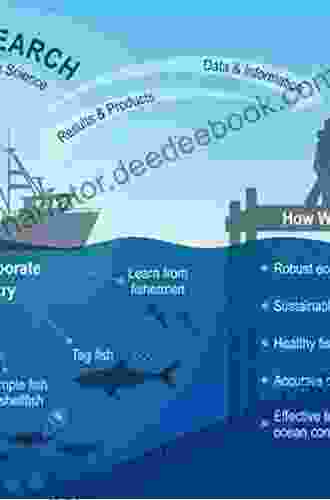Reef Fish Spawning Aggregations: Biology Research And Management (Fish Fisheries 35)

Reef fish spawning aggregations (FSAs) are remarkable events that play a pivotal role in the reproductive biology and population dynamics of many reef fish species. These aggregations involve large numbers of individuals congregating in specific locations and times to release their gametes, facilitating fertilization and increasing the chances of reproductive success. FSAs are essential for maintaining fish populations, ensuring genetic diversity, and contributing to the overall health and resilience of coral reef ecosystems.
Characteristics of Reef Fish Spawning Aggregations
FSAs exhibit distinct characteristics that distinguish them from other types of fish aggregations. These include:
Specific Temporal Patterns: FSAs occur at precise times of the lunar cycle, usually during the full or new moon. This synchronized spawning behavior ensures that the released gametes have the highest probability of encountering each other and fertilizing.
4.5 out of 5
| Language | : | English |
| File size | : | 10662 KB |
| Text-to-Speech | : | Enabled |
| Screen Reader | : | Supported |
| Enhanced typesetting | : | Enabled |
| Print length | : | 1021 pages |
Location Fidelity: Fish return to the same specific sites to spawn, year after year. These sites often provide optimal conditions such as shelter, food sources, and strong currents for dispersal of larvae.
Large Group Sizes: FSAs involve vast numbers of individuals, ranging from hundreds to hundreds of thousands of fish. These large aggregations increase the likelihood of successful fertilization and reduce the risk of predation.
Ecological Importance of Reef Fish Spawning Aggregations
FSAs are vital for marine biodiversity and ecosystem function. They:
Maintain Fish Populations: FSAs ensure the production of enough offspring to sustain fish populations. Without these aggregations, recruitment rates would be insufficient to replenish populations and maintain healthy stocks.
Enhance Genetic Diversity: The mixing of gametes from multiple individuals during FSAs promotes genetic diversity within fish populations. This genetic diversity provides resilience to environmental changes and increases the likelihood of adaptation over time.
Contribute to Food Webs: FSAs attract a wide range of predators, including large sharks, groupers, and tuna. These predators benefit from the abundant food source, which supports higher trophic levels within the ecosystem.
Threats to Reef Fish Spawning Aggregations
However, FSAs are facing numerous threats that jeopardize their ecological value. These threats include:
Overfishing: Commercial and recreational fishing often target fish during their spawning aggregations, where they are highly concentrated and vulnerable. Overfishing can severely deplete fish stocks and disrupt the reproductive cycle, leading to population declines and potential collapse.
Habitat Degradation: Destruction or degradation of coral reefs, which provide essential habitat for FSAs, can reduce the availability of suitable spawning sites and disrupt the reproductive behavior of fish.
Climate Change: Rising sea temperatures, ocean acidification, and changes in ocean currents can affect the timing and location of FSAs, potentially disrupting the synchronized release of gametes and reducing fertilization success.
Conservation and Management of Reef Fish Spawning Aggregations
Preserving FSAs is crucial for maintaining the health and productivity of coral reef ecosystems. Conservation and management measures include:
Establish Marine Protected Areas: Creating and enforcing protected areas around known FSA sites can safeguard these critical locations from fishing and other human activities that could disrupt spawning.
Implement Seasonal Closures: Restricting fishing during specific times of the year, particularly during known FSA periods, can help protect fish during their most vulnerable phase.
Promote Sustainable Fishing Practices: Educating fishers and implementing responsible fishing practices can minimize the impact of fishing on spawning aggregations.
Reef fish spawning aggregations are remarkable events that are essential for the reproductive success, genetic diversity, and overall health of coral reef ecosystems. However, these aggregations are facing numerous threats that require immediate attention and conservation efforts. By protecting FSAs, we safeguard the future of reef fish populations, the marine food web, and the ecological integrity of our oceans.
4.5 out of 5
| Language | : | English |
| File size | : | 10662 KB |
| Text-to-Speech | : | Enabled |
| Screen Reader | : | Supported |
| Enhanced typesetting | : | Enabled |
| Print length | : | 1021 pages |
Do you want to contribute by writing guest posts on this blog?
Please contact us and send us a resume of previous articles that you have written.
 Novel
Novel Chapter
Chapter Text
Text Story
Story Genre
Genre Reader
Reader Paperback
Paperback Magazine
Magazine Newspaper
Newspaper Bookmark
Bookmark Shelf
Shelf Glossary
Glossary Preface
Preface Synopsis
Synopsis Annotation
Annotation Footnote
Footnote Manuscript
Manuscript Scroll
Scroll Tome
Tome Classics
Classics Library card
Library card Biography
Biography Autobiography
Autobiography Encyclopedia
Encyclopedia Dictionary
Dictionary Narrator
Narrator Resolution
Resolution Librarian
Librarian Catalog
Catalog Journals
Journals Special Collections
Special Collections Interlibrary
Interlibrary Literacy
Literacy Study Group
Study Group Thesis
Thesis Dissertation
Dissertation Storytelling
Storytelling Reading List
Reading List Theory
Theory Textbooks
Textbooks Sheree Homer
Sheree Homer Alex Castle
Alex Castle Rob Vlock
Rob Vlock David Einhorn
David Einhorn Nick Newlin
Nick Newlin Karen Treisman
Karen Treisman Anne Bussey
Anne Bussey Ulla Schmid
Ulla Schmid Mildred M Crow
Mildred M Crow Chase Orton
Chase Orton D A Madigan
D A Madigan Frank Kane
Frank Kane Heather Hapeta
Heather Hapeta Paul Larney
Paul Larney Gary J George
Gary J George Rabih Alameddine
Rabih Alameddine Michel Thiry
Michel Thiry Don Carter
Don Carter W Michael Gear
W Michael Gear William Patten
William Patten
Light bulbAdvertise smarter! Our strategic ad space ensures maximum exposure. Reserve your spot today!

 J.D. SalingerSmart Automotive Mobility: Reliable Technology For The Mobile Human (Human...
J.D. SalingerSmart Automotive Mobility: Reliable Technology For The Mobile Human (Human... August HayesFollow ·2.2k
August HayesFollow ·2.2k Ernest HemingwayFollow ·8.3k
Ernest HemingwayFollow ·8.3k Robert BrowningFollow ·11.4k
Robert BrowningFollow ·11.4k Tyrone PowellFollow ·10.8k
Tyrone PowellFollow ·10.8k Albert CamusFollow ·14.5k
Albert CamusFollow ·14.5k Will WardFollow ·18.3k
Will WardFollow ·18.3k F. Scott FitzgeraldFollow ·17.6k
F. Scott FitzgeraldFollow ·17.6k Clarence BrooksFollow ·16.8k
Clarence BrooksFollow ·16.8k

 Abe Mitchell
Abe MitchellUnveiling the Urban Cheating Rich System: A Comprehensive...
In today's complex and ever-evolving urban...

 Preston Simmons
Preston SimmonsSelection, Processing, and Care of Reeds: A Comprehensive...
Reeds are essential...

 Rob Foster
Rob FosterKeeper of the Grail: The Youngest Templar
Prologue: A Sacred...
4.5 out of 5
| Language | : | English |
| File size | : | 10662 KB |
| Text-to-Speech | : | Enabled |
| Screen Reader | : | Supported |
| Enhanced typesetting | : | Enabled |
| Print length | : | 1021 pages |
















